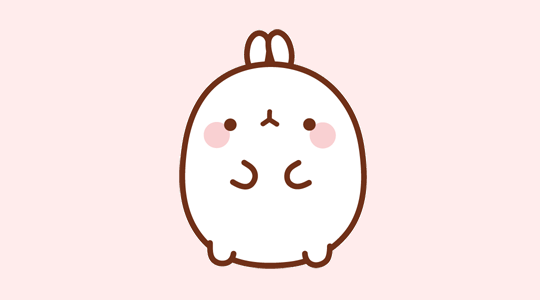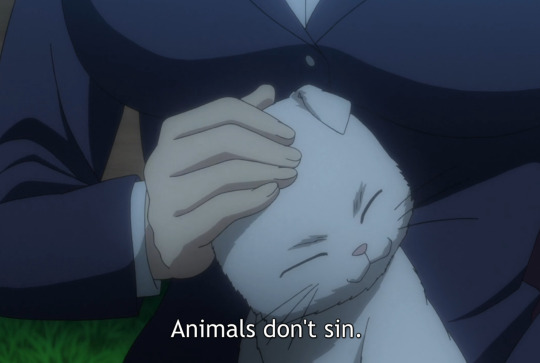Don't wanna be here? Send us removal request.
Photo

I am the morning sun, come to vanquish this horrible night.
538 notes
·
View notes
Photo


Shanoa from Castlevania: Order of Ecclesia commissioned by jackmaverick
1K notes
·
View notes
Note
You said that Japanese doesn't have plurals (which I learned), but can't you use ~たち at the end of things to make them groups/more than one? Like あなたたち would translate to English "you all"? Or was I taught wrong?

…………………………………………
Hm… the mini lessons above wasn’t specific. Here’s a more detailed explanation regarding Japanese and plural.
JAPANESE and PLURAL
We said that Japanese has no plural. What we meant is that there are no rules as in English to add s/es when an object mentioned is more than one. And no is / are in Japanese.
So in English we have apple –> apples or egg –> eggs.In Japanese it’s only ringo (apple) or tamago (egg).
So while in English we can say “There are apples in the table”.We know for sure that there are more than 1 apple in the tables due to the “THERE ARE” instead of there is and “APPLES” instead of apple.
In Japanese, you cannot know how many apple is on the table without mentioning the amount of apple or additional words such as “some /a few”
While there are ways to give information / to emphasize that the things we’re talking about is more than one, unlike in English, it is not wrong if you drop the information when amount isn’t important. And this is what we mean by no plural in Japanese. Maybe we should fix the word to “There are NO STRICT PLURAL RULES in Japanese”
*this is why many Japanese who learn English might not regard s/es as important
We hope this clear things up 。゚✶ฺ.ヽ(*´∀`*)ノ.✶゚ฺ。 Now we move on to the たち (-tachi)
…………………………………………
~ たち (tachi)
達 (Tachi) is a suffix. It indeed able to change I –> us and you –> you all. But note that it’s different than the is / are and s / es grammar concept in English. And only applicable for living things.
To put it bluntly, it’s just a word suffix to add a specific information/modify a word. And there are a lot of suffix in Japanese. One that you are familiar with would be ~さん(san) ~くん (kun) ~ちゃん (chan).
Adding these suffix to a name would modify the nuance a bit.- Yamada-san shows that we respect him (put him in a higher position)- Yamada-kun shows that we put him on the same level as us- Rika-chan shows a more cute/childish/sweet kind of nuance
There is actually another suffix which is ~ら for third person pronoun (he/she) . While there is a pattern for tachi & ra , some words are rarely heard at all it will be weird if you use it them in a conversation. So we recommend only to use common words you hear a lot instead of treating this as a pattern.
Here’s the most common words using tachi suffix:• watashi (I/me) -> watashitachi (we/us)• watashi (I/me) -> watashitachi (we/us)• anata (you) -> anatatachi (you all)• kare (him) -> karera (they/them)• *inu (dog) -> inutachi (a group of dogs)
*replace inu with another animals/living things
…………………………………………
TIPS
When talking about things in Japanese about amount of object, here’s what you need to think about written in priority.1. If the amount of object is not important, just say the noun without doing anything. For example: The apple in that super market is cheap. 2. If the amount of object is important and you know the exact number, mentioned the number. (don’t forget to put the proper counter. Japanese counter is quite complex so we’ll review it on another lessons, stay tuned! )For example: I bought 3 apples for 100 yen3. If the amount of object is important but you don’t know the exact number, you could use gurai/kurai which means about/approximately.For example: I bought approximately/about 30 apples for 1000 yen4. If the amount of object is important but you have no idea about the approximate number or if a specific amount isn’t important, you can use additional words such as “some/few/etc” for objects and the ~tachi suffix for living things. For example: - Some apples (ikutsuka no ringo) I bought are bad- I saw a group of dogs (inu-tachi) being abused
…………………………………………
While learning new language, especially as Japanese which has a lot of different structure than English, it’s very important to be flexible and to get rid of the common grammar pattern you know in English to make the learning process much easier.
…………………………………………
Reduplication of word/kanji to give information that we’re talking about more than 1 object.
This could be considered as true plural in Japanese. But again it’s a different concept than the is /are and s/es in English. It’s a word you use when you want to EMPHASIS the amount of object. So unlike English, it’s grammarly correct even if you don’t use this pattern if the amount is not important.
Note that this pattern only affect nouns and marker for this duplication is 々. And sometimes the first kana of the second word changes voice into is muddied sound (kana with mini quote).
人 hito (person) -> 人々 - ひとびと hitobito: people木 ki (tree) -> 木々- きぎ kigi: trees山 yama -> 山々- yamayama: mountains
…………………………………………
Hope it helps! 。゚✶ฺ.ヽ(*´∀`*)ノ.✶゚ฺ。
932 notes
·
View notes
Video
youtube
Rape Escape
Easy and very effective
Requires nothing but your body
Includes attack
1M notes
·
View notes
Photo

Meringhe azzurro puffo
1 note
·
View note
Photo

a quiet darkness // instagram | prints | facebook
6K notes
·
View notes
Photo

Galactic Shine | by Tannerstedt | http://ift.tt/2c3VI7e
510 notes
·
View notes
Text
About Kanji’s Pure Radicals
What is radical? Basically, a complex kanji is made out of a combination of shape/another kanji. We call these repeated shape/kanji “Radicals” or “Kanji’s building blocks”.
So, you might know that some kanji are made out of radicals which basically a standard normal kanji like the one below:

But there are also pure radicals!
Which means that they are purely building blocks and cannot stand by themselves . Some pure radicals have meaning but some don’t. As you can see in the image below, kanji with the same pure radicals usually hold a more/less related meaning. Note that this doesn’t apply to all kanji. But knowing this fact should help you to learn related kanji easier.
You can check out all 200+ list of radicals with this link here: https://en.wikipedia.org/wiki/List_of_kanji_radicals_by_stroke_count
If you’re new to Japanese, we recommend you to check out our article on Introduction to Kanji before you start learning them 。゚✶ฺ.ヽ(*´∀`*)ノ.✶゚ฺ。

837 notes
·
View notes



















